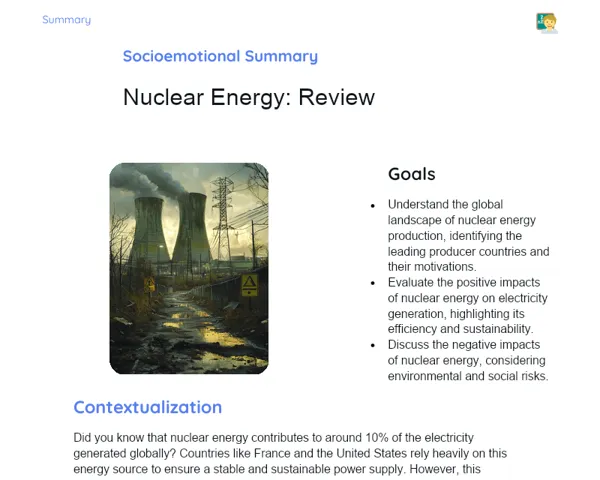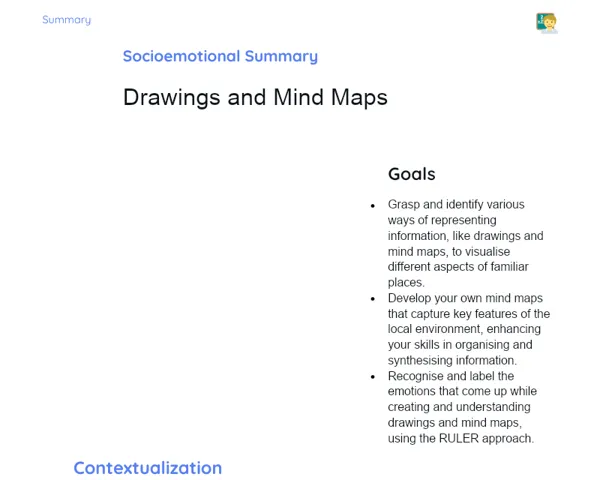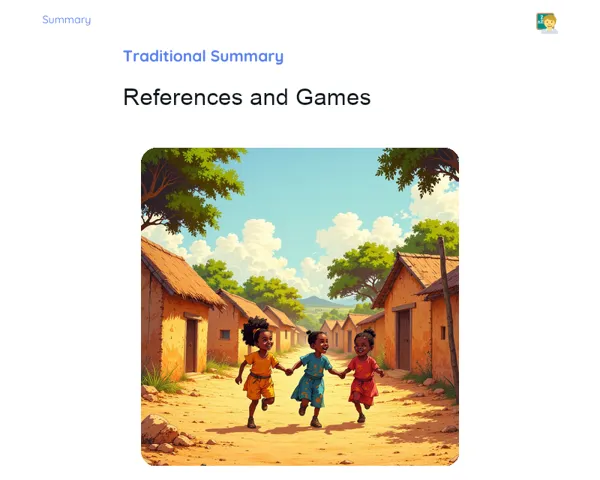Socioemotional Summary Conclusion
Goals
1. Identify the environmental, social, and economic features of the Oceania region.
2. Draw comparisons between these features and those found on other continents.
3. Cultivate self-awareness and a sense of social responsibility by reflecting on how environmental and cultural factors shape people's lives.
Contextualization
🌏 Picture yourself on a serene island in Polynesia, with the expansive Pacific Ocean surrounding you. What would your everyday life entail? What struggles and wonders would you face? By stepping into the shoes of Oceania's residents, we can foster greater social awareness and enhance emotional skills like empathy and sound decision-making. Let’s embark on this captivating journey through Oceania and uncover its unique attributes! 🚀
Exercising Your Knowledge
Environmental Characteristics of Oceania
Oceania boasts a rich tapestry of environments, from lush tropical forests and barren deserts to vibrant coral reefs. For instance, Australia is famed for its dry, desert-like weather, while New Zealand is celebrated for its stunning mountains and temperate woodlands. Coral reefs, such as the Great Barrier Reef, play a vital role in supporting marine life.
-
🌳 Diversity of Environments: Oceania features an array of ecosystems, from tropical jungles and mountain ranges to dry deserts. This environmental richness showcases a variety of flora and fauna, creating a profound bond with nature.
-
🏜️ Climate of Australia: With vast desert regions, Australia primarily experiences arid weather, shaping the lifestyles of its inhabitants and influencing their farming methods.
-
🏞️ Nature of New Zealand: Known for its picturesque mountainous scenery and lush forests, New Zealand is a haven for outdoor enthusiasts, positively impacting the mental and physical well-being of its citizens.
-
🐠 Coral Reefs: The Great Barrier Reef is a remarkable natural asset, essential for marine diversity. Safeguarding it is crucial for ecological stability and the tourism industry in the region.
Social Characteristics of Oceania
Oceania is rich in cultural diversity, housing various indigenous groups, including the Maori in New Zealand and the Aborigines in Australia. The locals are renowned for their warm hospitality and their deep-rooted connection to nature and cultural legacies. Surf culture and water sports are deeply cherished in these regions.
-
🏄♂️ Surf Culture: Surfing epitomizes the culture in Oceania, notably in Australia and the Pacific islands. This popular activity strengthens the bond with the ocean and encourages a healthy lifestyle.
-
👥 Indigenous Communities: The Maori of New Zealand and the Aborigines of Australia exemplify communities that uphold ancient traditions and maintain a profound relationship with the land. Learning about their cultures imparts lessons on resilience and appreciating our heritage.
-
🌱 Connection with Nature: The deep ties that Oceania's people have with nature shape their sustainable practices and respect for the environment. This knowledge can inspire us to adopt similar practices for a greener planet.
-
🤝 Hospitality and Community: Hospitality is a cornerstone of Oceania’s culture, emphasizing the significance of community bonds and empathy. Embracing this trait can inspire us to be more welcoming in our everyday lives.
Economic Characteristics of Oceania
Oceania has a multifaceted economy that includes agriculture, mining, and tourism. Australia ranks among the top exporters of minerals like iron and coal. Tourism plays a vital role in the economies of islands like Fiji and Vanuatu, drawing visitors with their breathtaking landscapes and rich cultural heritage.
-
💼 Economic Sectors: Oceania’s economy comprises agriculture, mining, and tourism, highlighting the need for diversification for sustainable growth.
-
⛏️ Mining in Australia: The mineral extraction industry, particularly for iron and coal, is a significant economic driver in Australia, generating employment and income while raising environmental and social concerns.
-
🏝️ Tourism in the Islands: Islands such as Fiji and Vanuatu rely heavily on tourism. The influx of tourists not only values their natural and cultural beauty but also poses challenges for environmental sustainability.
-
🌾 Agriculture and Sustainability: Agriculture is crucial to local economies, fostering practices that nourish the population and help conserve biodiversity.
Key Terms
-
Oceania: A region consisting of numerous islands in the Pacific Ocean, including Australia and New Zealand.
-
Environmental Diversity: The range of natural habitats, including tropical forests, deserts, and coral reefs.
-
Indigenous Communities: Native groups preserving unique cultures and traditions, including the Maoris and Aborigines.
-
Diversified Economy: An economy with various productive sectors such as agriculture, mining, and tourism.
-
Sustainability: Approaches aimed at conserving natural resources for future generations.
For Reflection
-
🌿 How does the strong connection of Oceania's people with nature shape our own relationship with the environment?
-
🏄♀️ In what ways can the cultural practices of the Maoris and Aborigines enlighten us about resilience and the importance of heritage?
-
🌏 What insights can we gain from Oceania’s diversified economy to foster more sustainable development in our communities?
Important Conclusions
-
Oceania is a continent abundant in environmental diversity, featuring tropical forests, deserts, and coral reefs, each uniquely impacting the lives of its residents.
-
Culturally, Oceania is marked by the existence of indigenous communities like the Maoris and Aborigines, who uphold ancient customs and maintain a strong affinity with nature.
-
Economically, Oceania spans diverse sectors like agriculture, mining, and tourism, demonstrating the necessity of a diversified economy for sustainable growth and resilience.
Impacts on Society
By delving into the characteristics of Oceania, we recognize how environmental diversity informs the lifestyles and cultural practices of its people. The conservation of coral reefs, for example, is essential not just for marine biodiversity but also for the tourism industry and the quality of life of local residents. Furthermore, the cultural practices of the Maoris and Aborigines offer profound lessons in resilience and remind us of the significance of appreciating our heritage. 🌱
Our feelings are closely tied to our environment. By understanding how Oceania’s inhabitants navigate their daily challenges, we can gain insights into our own emotions and reactions. Cultivating empathy and making informed decisions are vital skills that enable positive contributions to society. The economic diversity of Oceania illustrates that growth can occur in a balanced and conscientious manner, respecting both the environment and local communities. 🌍
Dealing with Emotions
To help process your emotions while studying Oceania and its diverse attributes, I recommend an exercise employing the RULER method. Begin by recognizing (Recognize) the emotions stemming from learning about Oceania's various cultures and environments. Next, try to understand (Understand) the causes of these emotions—are they rooted in curiosity, admiration, or concern? Accurately name (Label) these emotions and seek appropriate ways to express them (Express), whether through discussion or journaling. Finally, regularly practice regulating (Regulate) these emotions by finding healthy coping mechanisms, like pursuing creative outlets or contemplating how these lessons might be applied to your own life. 💡
Study Tips
-
Craft mind maps detailing the environmental, social, and economic features of Oceania to visualize the information more effectively.
-
Watch documentaries focusing on Oceania and its cultures to enhance your learning with visual and contextual insights.
-
Participate in study groups or online forums to share discoveries and encounter diverse viewpoints on the subject.



